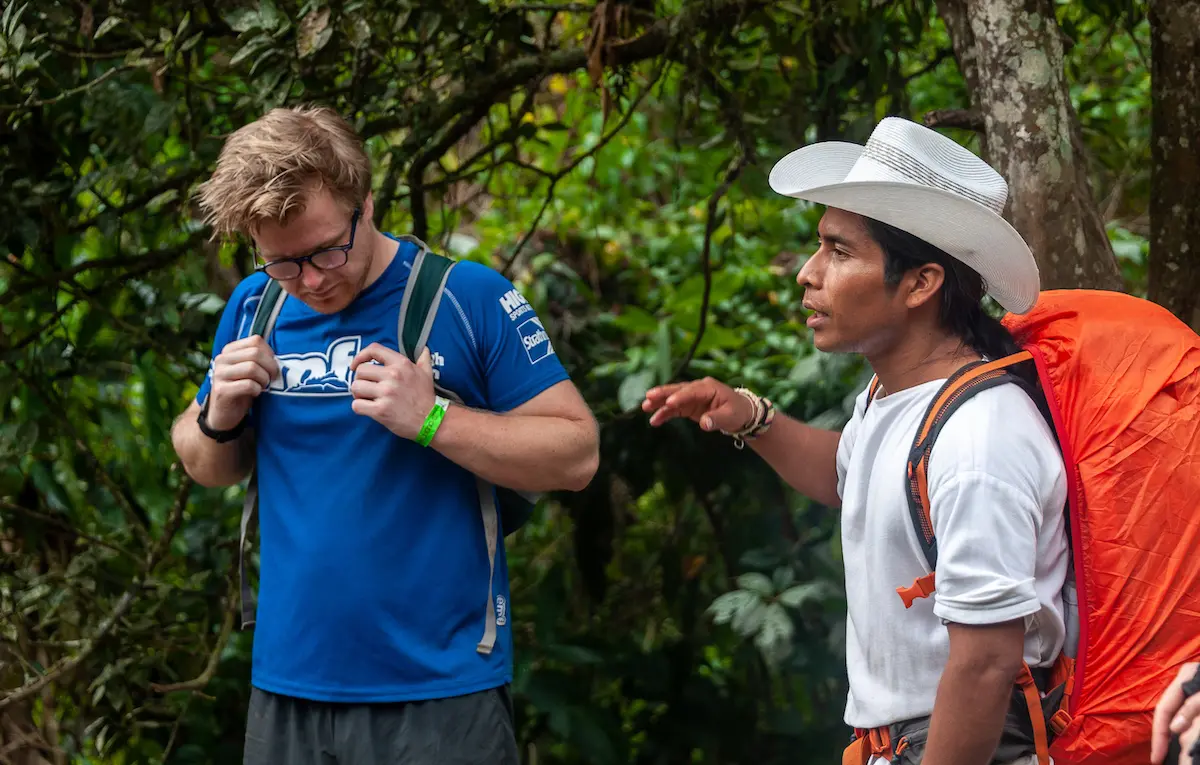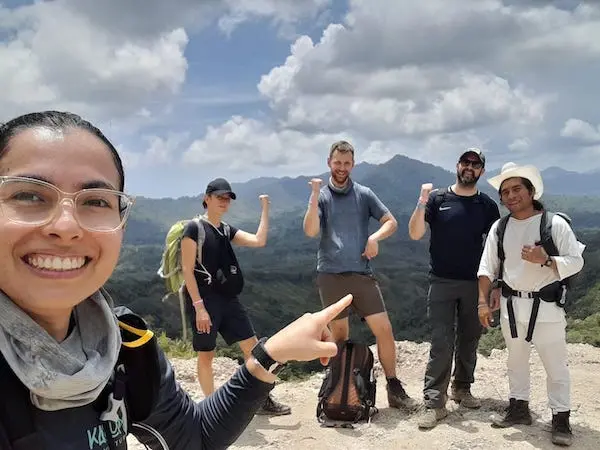Travel insights from Latin America
Getting to Know Kagumu’s Leaders: “Gabo”

Anyone traveling with Kagumu will truly experience local life and gain invaluable new perspectives on the world.
We are continually amazed at how our expert tour leaders enchant every visitor. They bring new places to life with local knowledge, guiding with passion, and inspiring travelers to live more sustainable lives.
Today, we present to you one of our valuable team members – Jose Gabriel Moscote Gil (also known as “Gabo”). Gabo leads our treks to Colombia’s Ciudad Perdida, an ancient lost city found in the coastal mountains around Santa Marta.
As a member of the Wiwa community, Gabo is one of only a few native guides leading groups on the 4-day trek. He recently sat down with us to share his vision for sustainable tourism, and how he wants to spread his wisdom to every visitor.
Thanks for joining us, Gabo. It is amazing having a native Wiwa community member working with Kagumu Adventures on our trips in the Lost City. How did you come to work in tourism?
I started when I had the opportunity to learn about tourism from SENA (a national training agency).
To begin I had to ask permission from the spiritual leader of the Wiwa community (el Mamo) where I grew up in a village called Gotsezhy. Then, with other Wiwa native community members and some local farmers, we undertook the training.
Then, I walked the trail with a cousin to get used to the route. Firstly, I started to walk the trek on my own and then with a small group.
I felt I needed to learn a new vision for the trail. I know my vision and the vision of my community. But, I didn’t know what the western vision was. This was essential to learn so I could understand the travelers perspective. I believed this would be essential to create a balance between us on our trips.
What do you want to show Kagumu guests when you are on the Lost City trek?
Firstly, I want them to experience our culture.
I want them to experience our way of life, our traditions. The only way to do this is to show people and to tell them our stories because our Wiwa history does not appear in any books or any written transcripts.
I want to show visitors how we live as a community and the four different indigenous peoples living in the Sierra. And the environment itself – the birds, the serpents, the other animals, the rivers, the mountains, these are all sacred to us.
I also want to show different elements of our culture, the process of fique (a natural fibre from a local plant), that women use to weave bags. And the objects we men use like the poporo (a wooden instrument given to a male as a sign of developing into manhood).
The whole experience is about gaining knowledge and an understanding of indigenous communities and our culture.
What do you like most about working with travelers on the Lost City trek?
I think as a guide I am also a teacher.
I love to teach. But as a guide I am also the doctor, the entertainer, the guide, and I love this.
I like to see when people learn something new on the trek and they can adapt it into their own lives. They can reflect on their experiences and learn about the world, something they didn’t know before. This is beautiful for me.

Which is your favorite part of the trek?
My favorite part of the trek is when I see something move within a traveler. Maybe this can come from an experience, a story they have heard, or something they learn.
I also like that it’s not in an office. I am a teacher so I also work in a school but this is great because I am in nature and I am learning all the time too.
I have also learned to take my time when trekking. This allows me to connect people with the flora and fauna in La Sierra Nevada de Santa Marta and observe lots of things.
Can you tell us more about what you do when you are not leading treks?
I am a teacher so I teach in a school with native children. I also visit my family in my old community and head to my farmhouse. I cultivate different things like coffee, cacao, corn and bananas. I try to take advantage of my time off to spend as much time as I can with my children.
What do you think are some of the most important lessons to share with guests when it comes to sustainable tourism?
I always tell travelers that when they visit La Sierra and Teyuna (the Lost City), it is like when they are visiting a house of a friend or family. They should ask for permission to enter and they need to have the same respect they would have when visiting their parents.
I also say that they should leave the trail as it was before visiting. We clean the trail every year because it is so important for us to respect nature. This is core to our beliefs.
What are your dreams for the future, Gabo?
I want to study more about tourism and become a better certified guide. I would also love to learn a new language like English.
I want to learn a language so I can get a better idea of how other people think and come back to my community and share my experiences. No one for example speaks English in my community so it would be great to do that and then I can become a teacher of my fellow community members.
Thank you Gabo for sharing your thoughts and experiences. Get to know Gabo or other Kagumu inspirations leaders on our cultural immersion trips around Latin America.
